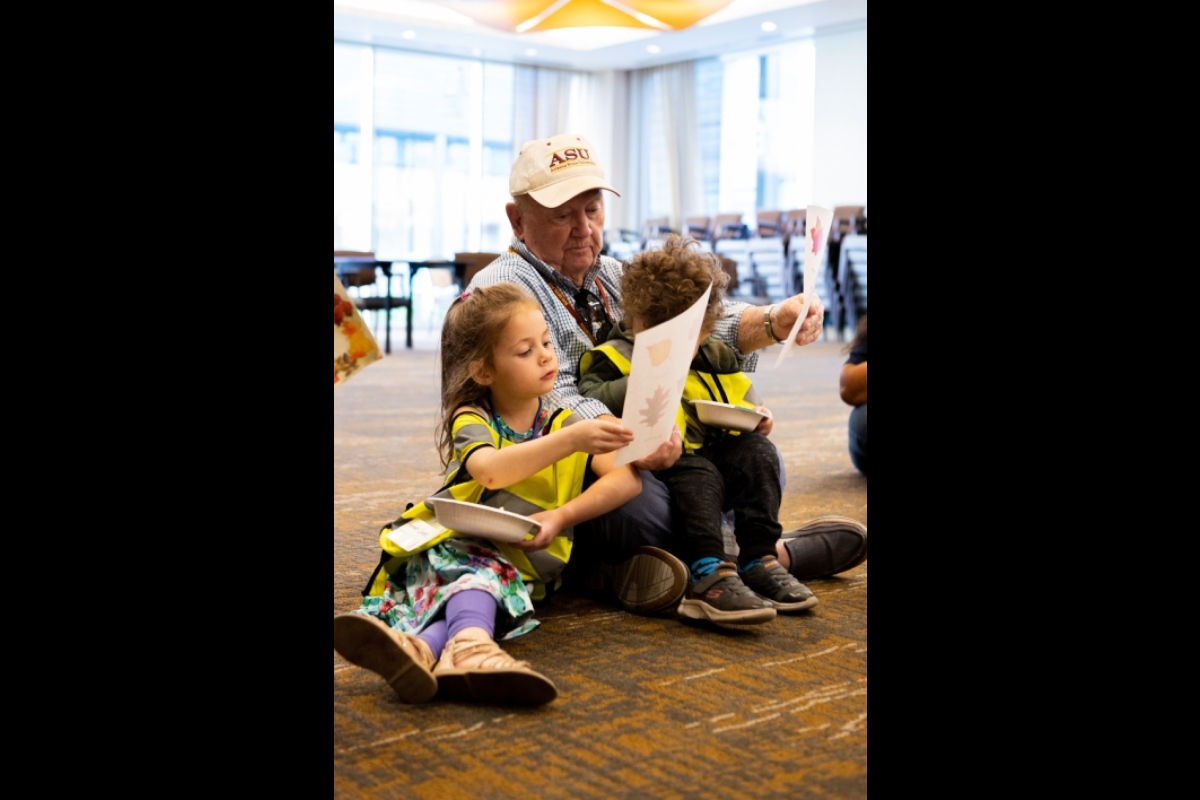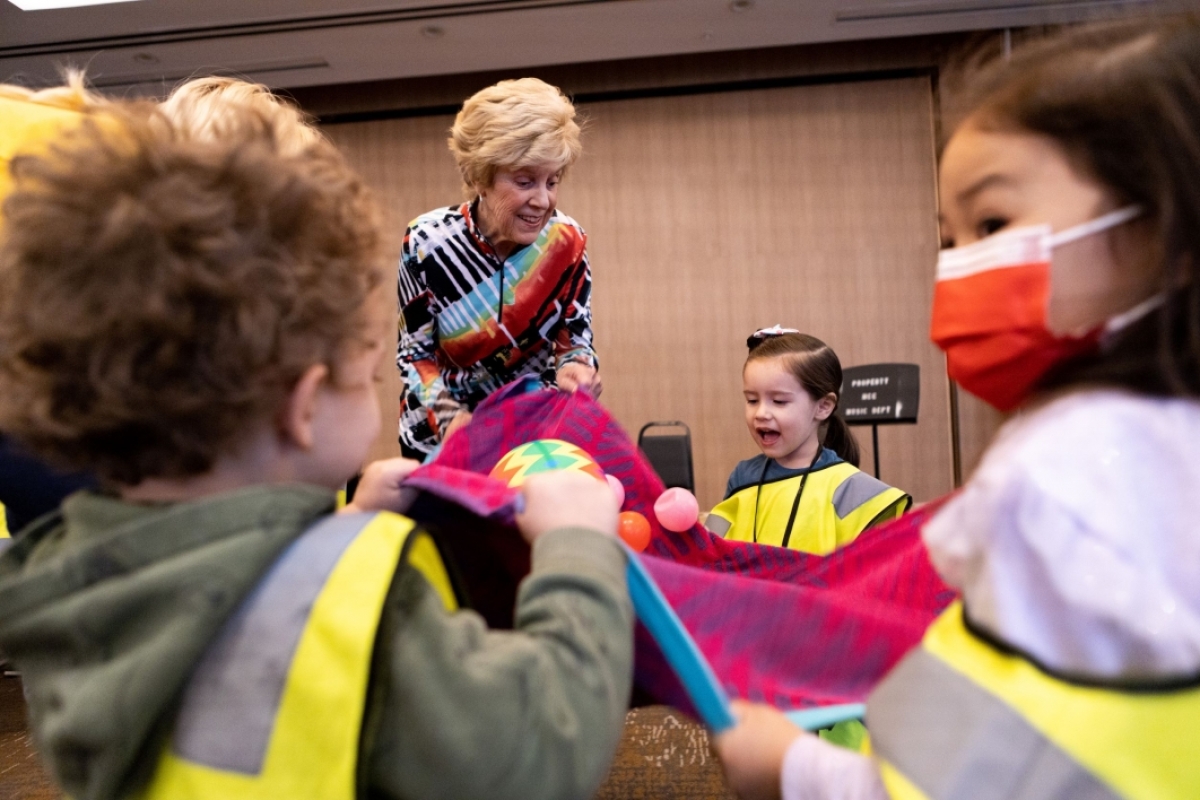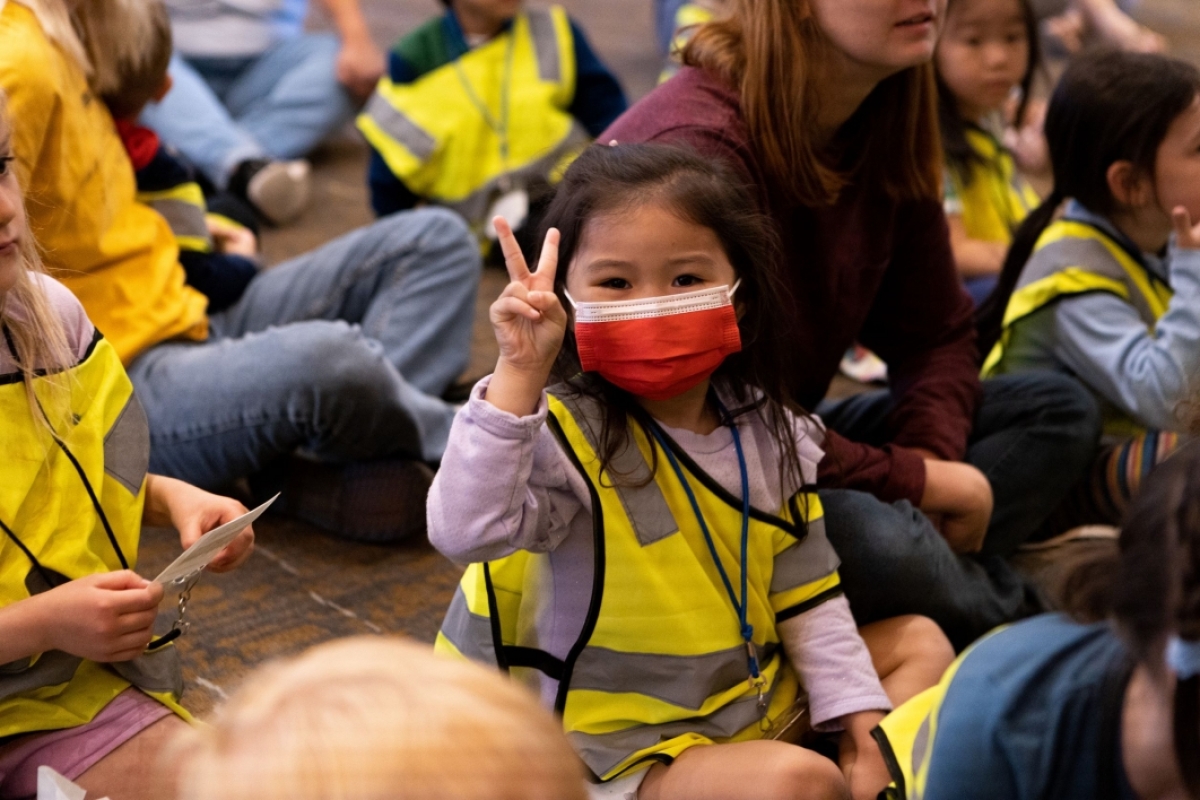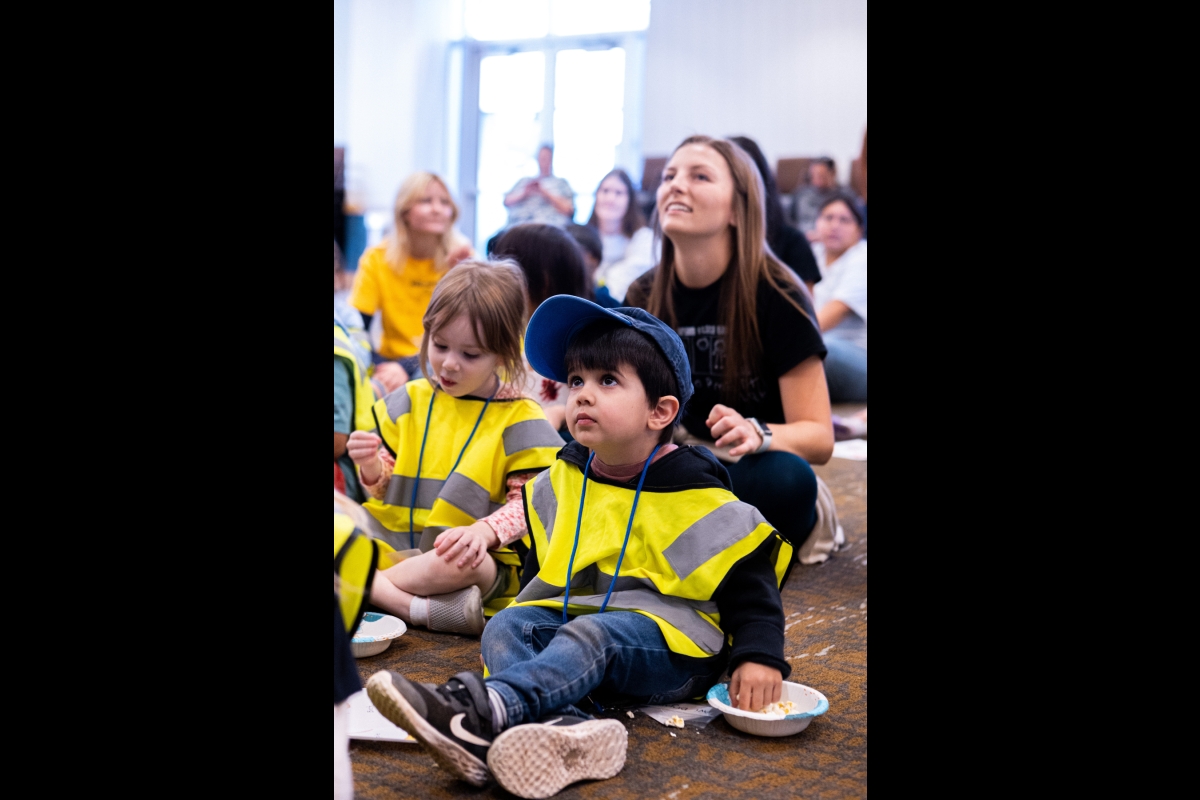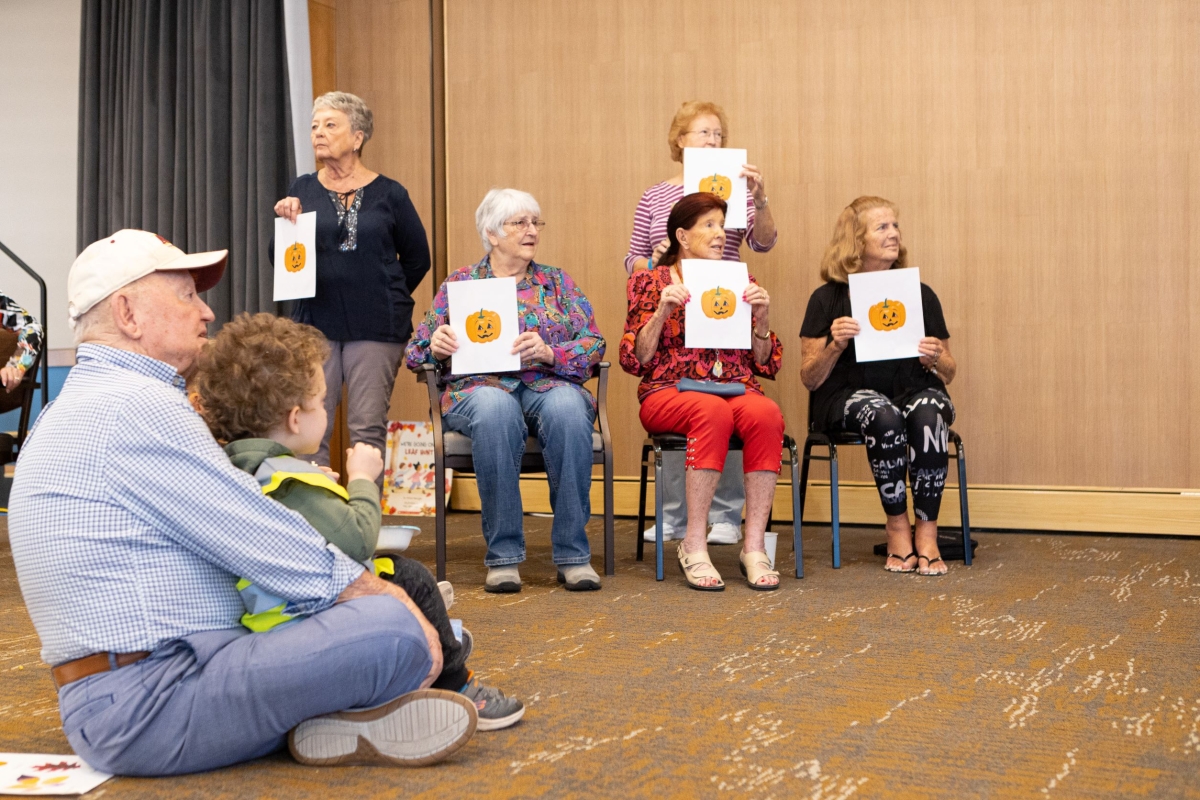Music, movement and maple leaves at ASU Mirabella
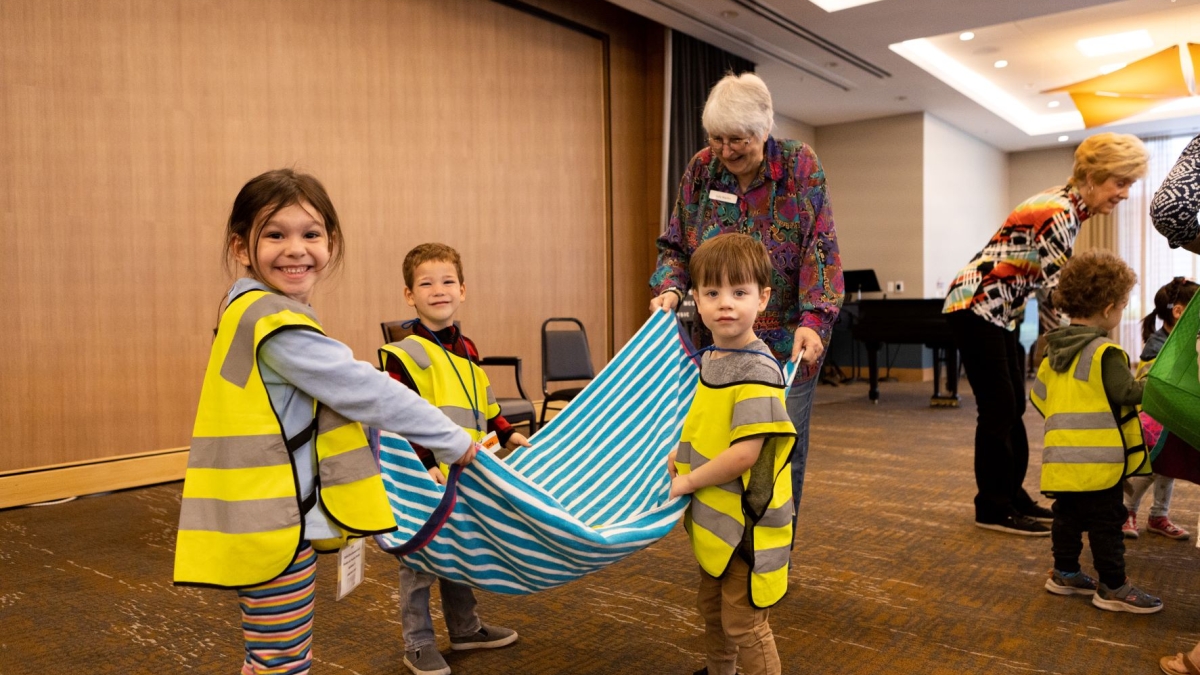
The Child Development Lab visits Mirabella for playing, dancing and reading a fall-themed story.
Residents at Mirabella at ASU, a university-based retirement community on the Arizona State University Tempe campus, were paid a special visit recently by the young and curious children from ASU's Child Development Lab. On this field trip, the children and Mirabella residents enjoyed playing, dancing and reading a fall-themed story.
The group also munched on popcorn, learned about varieties of colorful leaves and sang along to a guitar and vocal performance from Mirabella musician-in-resident Eiress Wicks, who played nursery tunes like “The Itsy Bitsy Spider” and “Five Little Pumpkins.” A Mirabella resident named Bob Glass accompanied Wicks on his own guitar.
Mirabella at ASU places retirees at the heart of the ASU Tempe campus and its bustling student life to facilitate an intergenerational exchange of living and learning experiences for a thriving community. The community is part of the ASU Learning Enterprise, which designs learning offerings and experiences that serve learners across their entire life span.
“As the New American University, ASU is re-imagining learning across the life span, from pre-K to post-retirement,” said Lindsey Beagley, senior director of lifelong learning engagement for Mirabella at ASU. “The meeting of the two worlds of children from the Child Development Lab visitors, who are some of the youngest members of our community, and Mirabella residents is evidence that connections between generations of learners can be mutually enriching and joyful.”
This isn’t the first field trip of its kind that the children from the Child Development Lab, an early childhood program in the T. Denny Sanford School of Social and Family Dynamics, have taken since Mirabella opened.
Student interns and staff members, who work in the lab to gain experience for their early childhood careers, take the children on supervised campus excursions that promote the children’s early social and cognitive development. With the retirement high-rise only a short walk away, the children and Mirabella residents can enjoy opportunities to interact.
Mary Warren, a Mirabella resident who participated in the event, said, “We know the brain science about the critical nature of a nurturing adult in a child's first 1,000 days for success in school and life. Plus, it is so fun and refreshing to play, sit and listen to toddlers and preschoolers who are just as delighted to be with us.”
Warren is right about the brain science behind these field trips. According to research, intergenerational activities have benefits beyond being fun; they’re good for both children’s and older adults’ health. Children get to develop language abilities, empathy and social acceptance, while older adults experience improved cognitive health, physical strength, social skills and quality of life.
At the Child Development Lab’s most recent field trip to Mirabella, these benefits seemed evident. Courtney Romley, the child development manager, said, “Seeing the connection between (Child Development Lab) children and Mirabella residents was even more special than we could have anticipated because it felt as though the children and residents were equally as excited to be spending time with each other.
“The residents were so welcoming and eager to participate in the activities with the children, which made it easy for the children to engage with comfort and enthusiasm. We are so grateful for all Mirabella did to make it such a great day for our children.”
More Health and medicine

What makes human culture unique?
Why is human culture — the shared body of knowledge passed down across generations — so much more powerful than animal cultures?“…

ASU honors students work on HPV research as part of Barrett College's largest-ever group thesis
Not every undergraduate student comes across the opportunity to do research as part of a team. Even fewer have had the chance to…

College of Health Solutions alumnus named Military Medic of the Year
By Keri Hensley and Kimberly LinnJonathan Lu has looked out for the health of his fellow military service members his whole…
